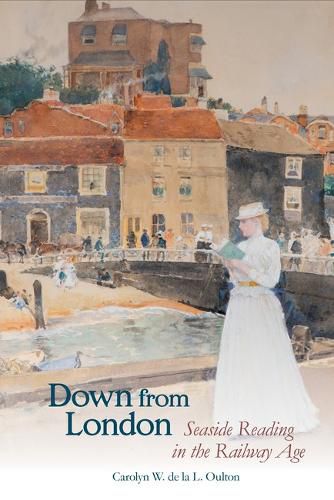Readings Newsletter
Become a Readings Member to make your shopping experience even easier.
Sign in or sign up for free!
You’re not far away from qualifying for FREE standard shipping within Australia
You’ve qualified for FREE standard shipping within Australia
The cart is loading…






In the first hundred years of the UK rail network, the seaside figures as a nerve centre, managing and making visible the period's complex interplay between health, death, gender and sexuality. This monograph discusses around 130 novels of the railway age to show how the seaside infiltrates a diverse range of literature, subverting the boundaries between high and low literary culture. The seaside holiday galvanises innovative literary forms, including early twentieth-century holiday crime and romance fiction, which has its origins in the sensational strategies of mid-nineteenth-century authors. Where reading takes place is at least as important as what is read, and case studies on literary Brighton and Dickensian Kent explore the occasionally fraught relationship between seaside towns and the metropolis, as London visitors are represented in - and are the target audience for - literary accounts of the seaside holiday. The act of reading by the sea is itself overdetermined and problematic, a dilemma that is managed in part through the development of text-free literary tourism in the late nineteenth century. Deploying strategies from literary criticism, histories of reading, libraries and the book, and literary tourism, this book recovers 'seaside reading' as both a literary sub-genre and a deeply contested mode of engagement.
$9.00 standard shipping within Australia
FREE standard shipping within Australia for orders over $100.00
Express & International shipping calculated at checkout
In the first hundred years of the UK rail network, the seaside figures as a nerve centre, managing and making visible the period's complex interplay between health, death, gender and sexuality. This monograph discusses around 130 novels of the railway age to show how the seaside infiltrates a diverse range of literature, subverting the boundaries between high and low literary culture. The seaside holiday galvanises innovative literary forms, including early twentieth-century holiday crime and romance fiction, which has its origins in the sensational strategies of mid-nineteenth-century authors. Where reading takes place is at least as important as what is read, and case studies on literary Brighton and Dickensian Kent explore the occasionally fraught relationship between seaside towns and the metropolis, as London visitors are represented in - and are the target audience for - literary accounts of the seaside holiday. The act of reading by the sea is itself overdetermined and problematic, a dilemma that is managed in part through the development of text-free literary tourism in the late nineteenth century. Deploying strategies from literary criticism, histories of reading, libraries and the book, and literary tourism, this book recovers 'seaside reading' as both a literary sub-genre and a deeply contested mode of engagement.